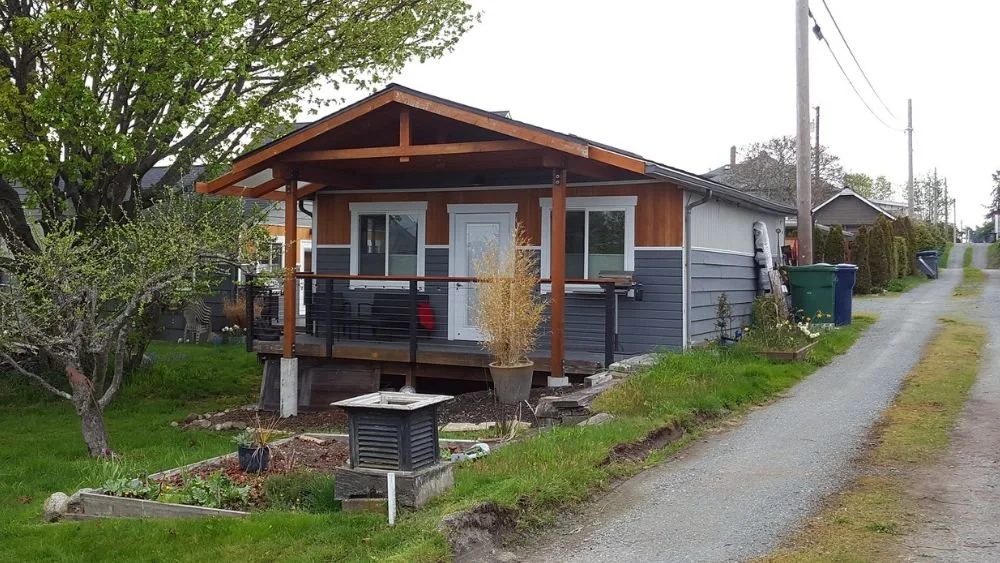Achieving scale in affordable housing
This essay by Strong Towns member, Joe Cortright, was originally published on City Observatory and is reprinted here with permission.
There’s little question that housing affordability is a growing problem in many cities around the country. Rents have been rising faster than incomes, especially for low- and moderate-income households.
One of the most widely touted policy responses is “inclusionary zoning,” which requires developers who build new housing to set aside at least a portion (typically 10 to 20 percent) of new units that will be sold or rented for less than the market price.
In many respects, inclusionary zoning seems like a win-win, free lunch policy: by making developers pay for new affordable housing, these new homes don’t directly cost taxpayers a dime. But developers have to make up the cost of these below-market units somewhere, and typically it will be by passing the costs on to the buyers of the market rate units in their development. At least one study* suggests that this results in higher prices. In some cases, cities offer density bonuses to developers to ease the financial burden of constructing below market units, but it’s far from clear that the bonuses cover the additional costs, plus the uncertainty and negotiation that attends these frequently discretionary approval processes adds to costs.
But the larger problem with inclusionary zoning requirements is that they may simply not be up to the scale of the problem. Although dozens of jurisdictions have enacted inclusionary zoning requirements, they simply haven’t produced many units of housing. Consider New York City’s decade-old policy. In many ways, New York ought to be a perfect place for inclusionary zoning, which tends to do best in hot real estate markets. But in one of the nation’s hottest housing markets, in its largest city, inclusionary zoning produced about 2,800 units of affordable housing its its first decade—about 280 per year, in a metropolis of over eight million people.
Most inclusionary zoning programs are much smaller, and cities have less leverage with developers because market-rate development is not nearly as profitable as it is in robust markets like New York. A recent compendium of inclusionary zoning programs showed that only six cities nationally operated inclusionary zoning programs that had produced more than 100 units per year, and just one jurisdiction—Montgomery County, Maryland, a high income suburb of Washington, DC—accounted for nearly half of all inclusionary zoning units.
“The fundamental problem with inclusionary zoning is also its primary advantage: it asks for, and receives, virtually no taxpayer money.”
The fundamental problem with inclusionary zoning is also its primary advantage: it asks for, and receives, virtually no taxpayer money. But skimming off the top of developer profits is almost by definition an inadequate source of funding for affordable housing, particularly in places like New York and San Francisco where the need is most acute. All newly built housing is generally a fraction of one percent of a city’s housing market in any given year; housing that triggers inclusionary requirements is less than that; and you then have to reduce that number by 80 to 90 percent to get to the 10 to 20 percent set-aside of affordable units. It’s not an accident that Montgomery County has built so much inclusionary housing, relatively speaking—it’s also built vastly more housing, period, than most cities, nearly doubling its population since 1970. How many inclusionary housing advocates in other parts of the country are eager for such a breakneck pace of development?
Solutions, then, are likely to require some actual tax money. One possibility: dedicate a portion of the added property tax revenue from new real estate construction to subsidizing affordable housing. Portland, Oregon has dedicated about a third of such revenues to affordable housing, and has built more than 2,300 units of affordable housing in one neighborhood near downtown—nearly as much as New York’s affordable housing ordinance has produced in the five boroughs of New York. Portland has dedicated $67 million on tax increment funds over the next decade to support affordable housing in the city’s fast changing neighborhoods. Also, unlike inclusionary zoning, using tax increment financing doesn’t have the undesirable side effect of driving up the price of market rate housing or constricting the supply of market rate units.
Ultimately, a solution that addresses the scale of the nation’s affordability problems will have to tackle the nation’s highly skewed subsidies to homeownership by higher income households. The combination of the mortgage interest deduction, property tax deduction, capital gains exemption and the non-taxation of imputed rents amounts to a federal subsidy to owner-occupied housing on the order of $250 billion per year, most of which goes to the nation’s highest income households.There’s a lot we could do: like expand funding for rental vouchers, which reach only 22 percent of those who qualify. Or tap the capital gains that accrue to homeowners (in substantial part due to the constriction of housing supply by zoning regulations). But it should be clear that feel good programs like inclusionary zoning are mostly a token response to a problem of much more substantial dimension.
* See: Schuetz, Meltzer & Bean, Silver bullet or trojan horse? The effects of inclusionary zoning on local housing markets in the United States, Urban Studies 2011;48(2):297-329. The authors note that most inclusionary zoning programs have had a modest scale relative to housing markets, and conclude: “Results from suburban Boston suggest that IZ has contributed to increased housing prices and lower rates of production during periods of regional house price appreciation. In the San Francisco area, IZ also appears to increase housing prices in times of regional price appreciation, but to decrease prices during cooler regional markets. There is no evidence of a statistically significant effect of IZ on new housing development in the Bay Area.”
(Top photo from Champion Home Builders)




